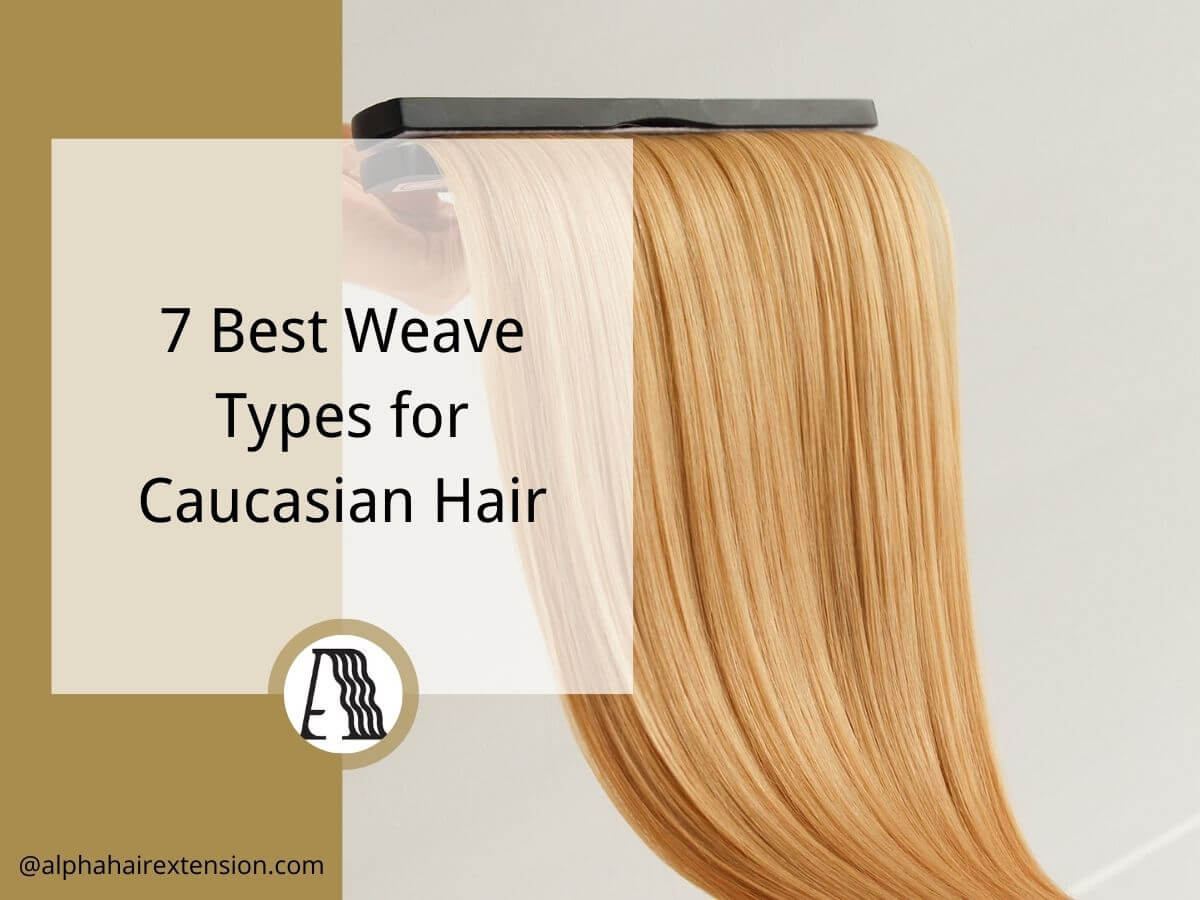The first time I had a client come back complaining about her tip extensions, I was confused. I had applied them perfectly. But after just a few weeks, they looked dry, tangled, and brittle.
Then I asked her about her aftercare routine. The answer? She was treating them like regular hair—using the wrong shampoo, brushing too aggressively, and skipping heat protection.
This is a common mistake. Many people don’t realize that tip extensions require a specific care routine to stay soft, secure, and long-lasting. And that’s exactly why I put together this Ultimate Tip Extension Maintenance Guide.
In this guide, I’ll share:
- The right way to store it
- The must-have products to keep them looking healthy
- How to avoid common mistakes that lead to early damage
By the end of this article, you’ll have a proven routine to extend the life of tip extensions—ensuring your investment (or your client’s) lasts as long as possible.
So let’s get started!
1. What Are Weft Hair Extensions?
Weft extensions are made by stitching strands of hair onto a thin strip, or “weft.” Unlike individual tip extensions, these come in long, continuous rows, making them easier to install in bulk. But here’s the catch—quality varies. The stitching, hair type, and manufacturing process all affect durability.
Some wefts shed too much. Others have weak stitching that falls apart after a few washes. If you’ve ever had to deal with customer complaints or high return rates, you know how frustrating this can be.
Types of Weft Hair Extensions in the Market
Before you invest, you need to know what’s available.
Machine-Wefted Extensions – These are stitched using industrial machines. They’re strong but can be bulky if not properly constructed.
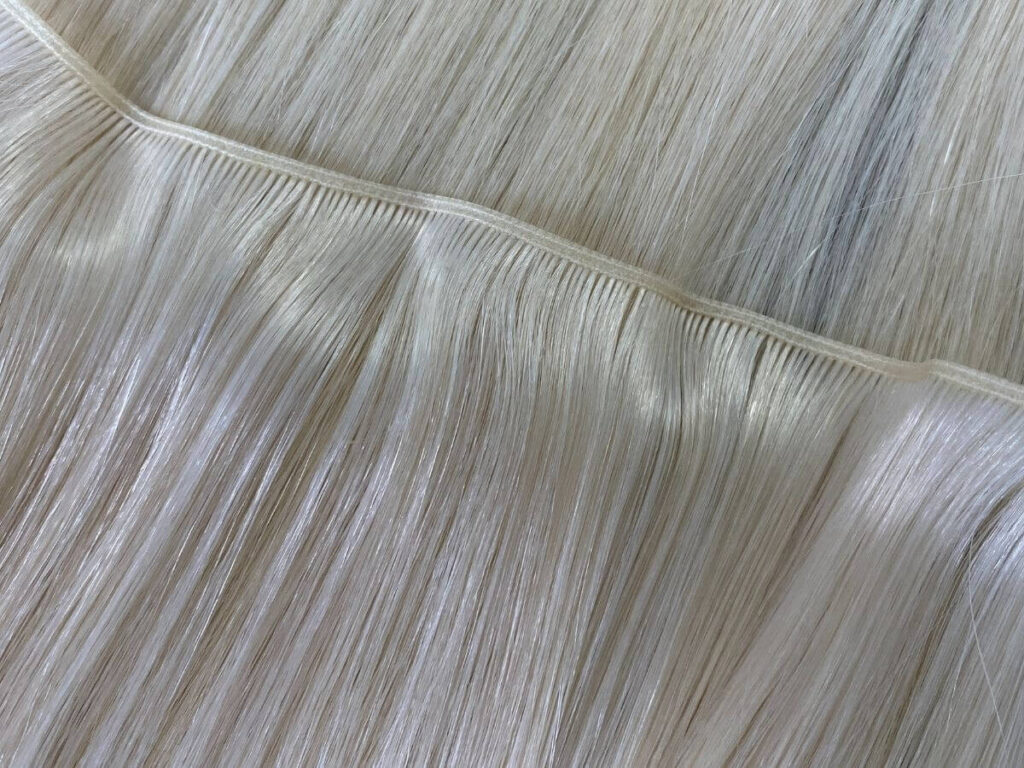
Hand-Tied Wefts – Made by hand, these are thinner and more flexible. They blend well but require more delicate handling.
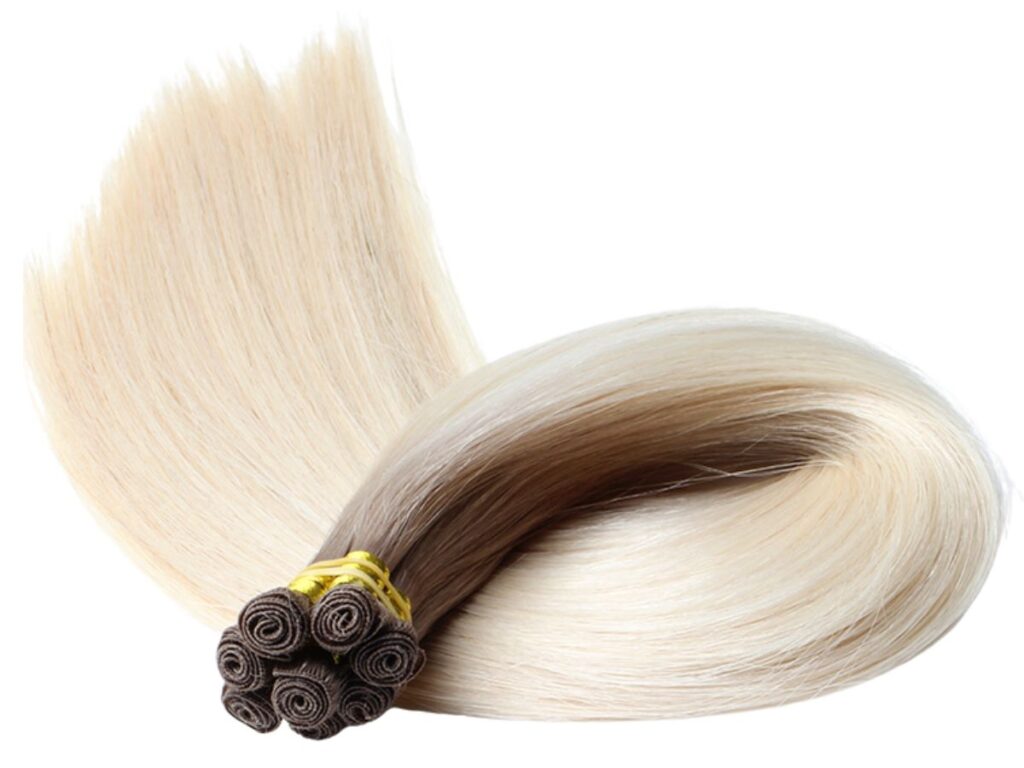
Flat-Weft Extensions – A newer option, combining the strength of machine wefts with the flexibility of hand-tied wefts.
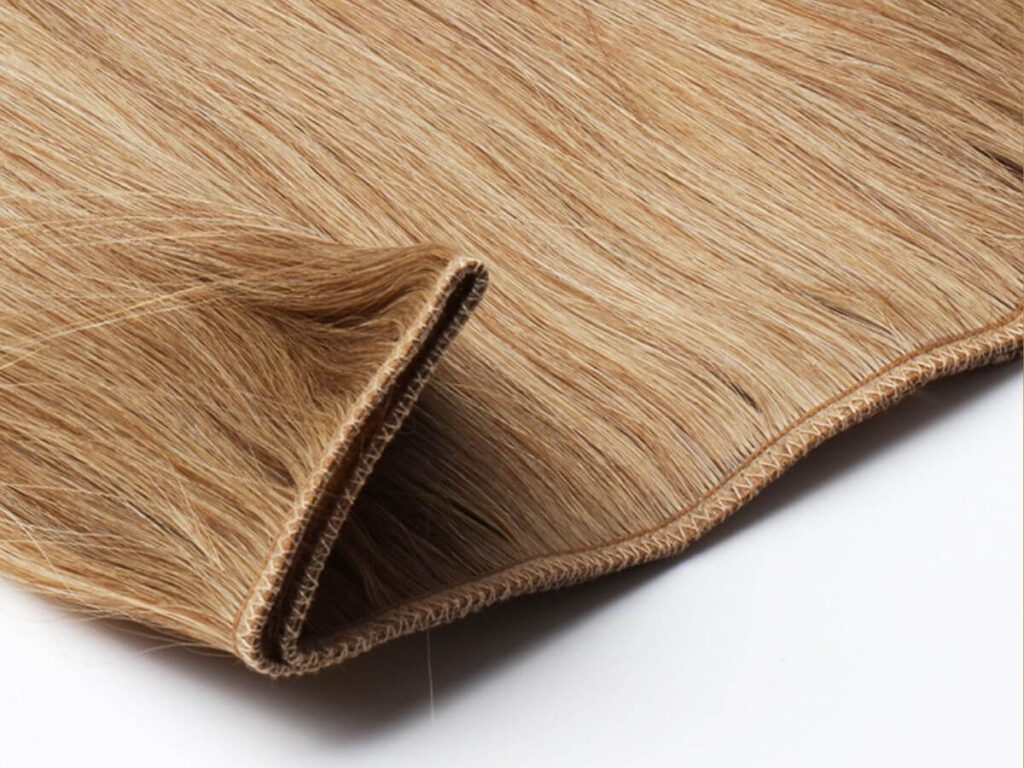
Each type has its advantages, but not all will fit your business needs.
How Do You Choose the Right Weft Extensions for Your Business?
Not all suppliers deliver consistent quality. Some use low-grade hair with a short lifespan. Others use uneven stitching that causes bulkiness and discomfort.
When sourcing, ask yourself:
- Is the hair truly Remy? (Meaning cuticles are intact and aligned.)
- Is the weft reinforced to prevent shedding?
- How does it react to washing and styling?
I learned the hard way that price doesn’t always reflect quality. A cheap weft that sheds after two washes costs more in refunds and lost trust.
2. Daily Maintenance Routine for Weft Hair Extensions
If your extensions aren’t properly stored, handled, and shipped, customers will notice. High return rates, negative reviews, and damaged inventory can all be traced back to poor maintenance at the business level.
Are you protecting your inventory and maintaining product quality before it reaches your customers? A strong daily maintenance routine isn’t just about care—it’s about protecting your business reputation.
Here’s a simple daily routine that can significantly extend their lifespan:
Proper Storage
Weft extensions sitting in your warehouse or stockroom can deteriorate if not stored correctly. Improper handling leads to dust buildup, dryness, and tangled bundles—all, all of which affect product quality before it even reaches a customer.
Best practices for storage:
- Keep extensions in a climate-controlled environment to prevent humidity damage.
- Store them in breathable packaging, like silk or mesh bags, rather than plastic that traps moisture.
- Hang or lay extensions flat to avoid creases and tangling.
Neglecting storage conditions can result in extensions losing their softness and shape, increasing return rates and customer complaints.
Handling Inventory
Wefts are delicate, and improper handling can weaken the stitching, causing premature shedding. Every time an extension is moved, packed, or displayed, there’s a risk of damage.
How to minimize wear:
- Always handle wefts by the base, not by pulling on the strands.
- Use satin-lined trays for display and organization to reduce friction.
- Limit excessive repackaging, as repeated folding and unfolding stress the weft.
A well-maintained inventory means products arrive to customers in optimal condition, reducing complaints about shedding or poor stitching.
Maintaining Weft Integrity During Shipping
Poor packaging during transit can cause extensions to arrive tangled, matted, or misshapen. This leads to negative first impressions and increased returns.
Best practices for shipping:
- Use secure, structured packaging to prevent wefts from shifting inside the box.
- Avoid vacuum sealing, as compression can weaken the weft stitching.
- Include care instructions in bulk orders, ensuring buyers handle them properly on arrival.
A well-packed order not only looks professional but also maintains product integrity, leading to better client retention.
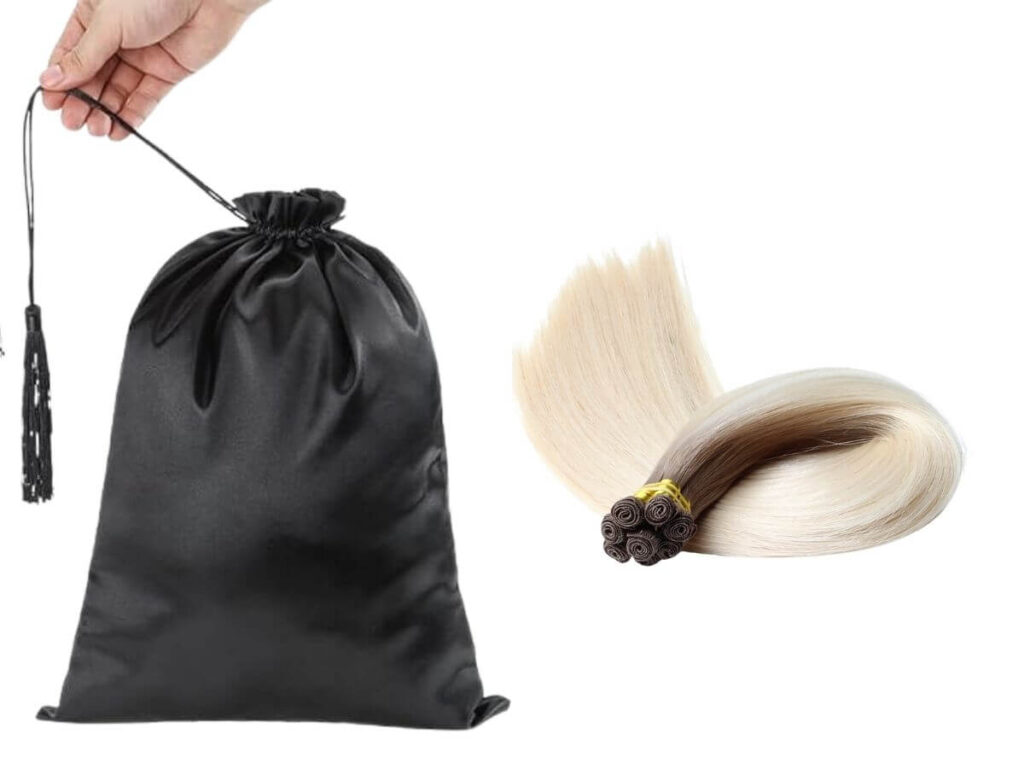
3. Washing and Conditioning Weft Hair Extensions
If weft extensions arrive at a salon feeling dry, tangled, or coated with residue, they won’t sell well. That leads to refunds, lost clients, and damaged trust. Proper washing and conditioning at the business level ensures your inventory stays in top condition.
Are you checking your wefts before shipping? A little extra care now can prevent big problems later.
Should You Wash Weft Extensions Before Selling?
This depends on your supplier and storage conditions. Some manufacturers apply a silicone coating to make the hair look sleek and shiny. But once that coating wears off, the real quality of the hair is revealed. If the extensions feel stiff, overly glossy, or have a chemical scent, a light wash before selling can improve texture and remove buildup.
When to wash before selling:
- If the wefts have residue from manufacturing.
- If they feel too coated or unnaturally shiny.
- If they’ve been in storage for long periods.
Testing a sample from each batch can help you avoid quality complaints later.
How to Properly Wash Weft Hair Extensions Before Distribution
Washing weft extensions the wrong way can lead to shedding, dryness, or tangling—even before they reach your customers. If you’re handling inventory, washing should be done carefully to preserve quality.
The best washing process:
- Use lukewarm water—hot water weakens the weft stitching.
- Apply sulfate-free shampoo, working gently through the strands.
- Hold the weft at the base to prevent excessive tension.
- Rinse thoroughly to remove any residue.
A gentle approach keeps the extensions in sellable condition, reducing complaints from salons and retailers.
Conditioning for Longevity and Softness
Without natural scalp oils, weft extensions rely on conditioning to maintain moisture. If they dry out in storage, they become brittle before reaching the customer. Proper conditioning keeps them soft and manageable.
Best conditioning practices:
- Use a lightweight conditioner, avoiding heavy formulas that weigh the hair down.
- Apply from mid-length to ends—never on the weft stitching.
- Let it sit for 5-10 minutes, then rinse with cool water to seal in moisture.
For bulk inventory, misting the hair lightly with a conditioning spray before packaging can help maintain its freshness.

4. Drying Weft Hair Extensions Safely
I’ve seen so many cases where improper drying leads to moldy, smelly wefts—especially with sew-ins. Air drying is best, but it has to be done correctly.
The Biggest Mistakes Businesses Make When Drying Wefts
Wefts are delicate. If you dry them the wrong way, you can ruin their texture and shorten their lifespan before they even reach customers. Some common mistakes include:
- Packing extensions before they’re fully dry – Traps moisture, leading to mildew.
- Using high heat – Weakens the weft stitching weakens and makes hair brittle.
- Leaving hair bundled while drying – causes uneven drying and tangling.
These errors don’t just affect hair quality. They impact how your clients perceive your brand.
The Right Way to Dry Weft Extensions
A controlled drying process keeps wefts smooth, strong, and ready for resale. Here’s what works:
- Remove excess moisture gently – Use a microfiber towel to absorb water. Never wring or twist the hair.
- Lay extensions flat or hang them – Air circulation is key. Spread them out or use a hanger to prevent clumping.
- Use cool or low heat if necessary – If using a blow dryer, keep it on a low setting and hold it at a distance.
How to Store and Ship Dry Wefts Properly
Even if you dry the hair correctly, poor storage and shipping can reverse your efforts. Moisture can build up if extensions are packed too tightly or stored in humid conditions.
Best practices:
- Store wefts in breathable packaging – Mesh bags or silk-lined boxes allow airflow.
- Control warehouse humidity – Use dehumidifiers in storage areas to prevent excess moisture.
- Include silica gel packs in shipments – They absorb residual humidity, keeping extensions fresh.
5. Sleeping with Weft Hair Extensions
Bad nighttime routines lead to product damage. Damaged extensions lead to complaints. Complaints lead to refunds, bad reviews, and lost business.
A high return rate doesn’t always mean low-quality hair. It often means customers aren’t maintaining it properly. Helping your buyers understand this protects your reputation and reduces losses.
How to Reduce Friction and Prevent Tangling
Friction is one of the biggest threats to weft extensions. It roughens the cuticle, weakens the stitching, and leads to knots that are impossible to brush out.
Here’s how to minimize damage:
- Recommend silk or satin pillowcases – Cotton absorbs moisture and causes friction, leading to frizz.
- Encourage loose braiding or ponytails – This keeps hair contained and prevents excessive movement.
- Avoid sleeping with wet hair – Damp extensions are more likely to tangle and weaken.
When these simple steps are followed, the extensions last longer, and complaints decrease.
Protecting the Weft Stitching for Long-Term Use
The stitching on a weft is its foundation. If it loosens, the entire extension starts shedding. Many businesses overlook how nighttime habits impact this.
Best practices:
- Use a silk or satin bonnet – This reduces tension on the weft and keeps the bonds secure.
- Limit tight ponytails or buns – Too much pulling can weaken the stitching over time.
- Educate clients on gentle detangling before bed – A few minutes of care at night prevents major damage by morning.
If the stitching holds, the weft lasts longer—and your customers keep coming back.

6. Long-Term Care and Storage Tips
If you’re in the business of selling or distributing weft extensions, I believe that how you store them matters just as much as the quality you sell. Poor storage can lead to moisture damage, shedding, or even mold. And once the product is ruined, there’s no fixing it.
How Poor Storage Can Ruin Your Inventory
Weft extensions may not expire, but they can degrade over time. The biggest threats?
- Humidity – Causes frizz, weakens the weft stitching, and promotes mold growth.
- Dust and pollutants – Build up over time, making the hair feel rough and unclean.
- Compression damage – Storing extensions in tight packaging for too long can cause unnatural bends and tangling.
If your storage space isn’t climate-controlled, you’re gambling with product quality.
The Best Way to Store Weft Extensions for Longevity
A well-maintained inventory means fewer complaints and higher reorder rates. Here’s how to keep wefts in top condition:
- Use breathable packaging – Mesh bags or silk-lined cases allow airflow and prevent static buildup.
- Control temperature and humidity – Keep storage areas cool, dry, and away from direct sunlight.
- Store wefts flat or hanging – Folding or cramming them into small spaces leads to permanent creases and matting.
- Rotate stock regularly – Avoid keeping extensions stored for too long by following a first-in, first-out system.
- Use silica gel packs in shipments – These absorb excess moisture and prevent mold growth.
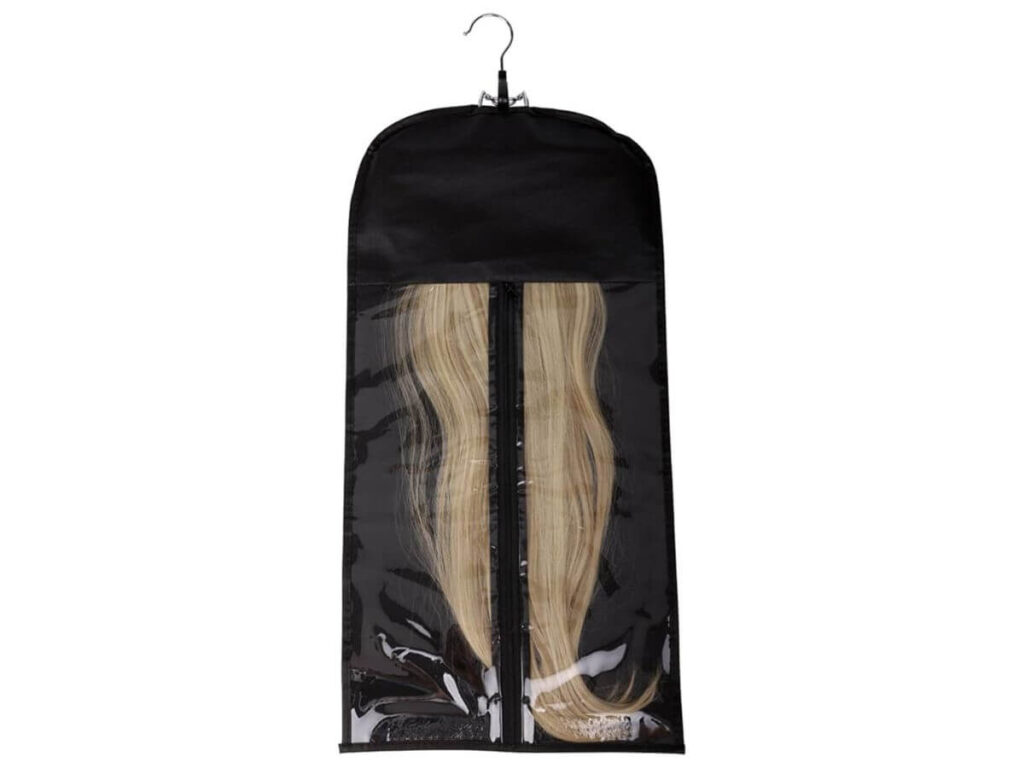
Conclusion
Long-term care of weft hair extensions isn’t complicated—it’s just about storing, handling, and shipping wefts the right way. When you protect your inventory, you protect your profits.
Start now. Take control of your storage before it costs you. Small changes today prevent big losses tomorrow.
Are your extensions stored properly? Let’s make sure it is.
Contact us now and let’s take your business to the next level.
Explore More Helpful Resources
Not quite what you’re looking for? Explore our wider product range for more choices:
Still haven’t found what you’re looking for? Don’t hesitate to contact us. We’re available around the clock to assist you.


